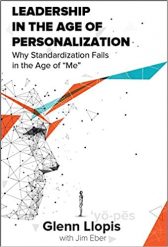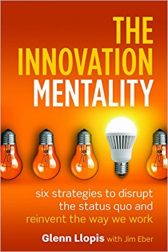Glenn Llopis (pronounced ‘yo?-pe?s) is the Chairman of the Glenn Llopis Group (GLLG), a nationally recognized workforce development and business strategy consulting firm. A bestselling author of the books The Innovation Mentality and Earning Serendipity, Glenn has more than 25 years’ experience as an executive and entrepreneur. He is a senior advisor and speaker to Fortune 500 companies and organizations in retail, consumer packaged goods, healthcare and beyond.
Known for helping organizations move inclusive leadership to where it belongs – to corporate strategy and transformation – Glenn uses six strategies that his research has identified to help leaders disrupt the status quo and reinvent the way they work. Glenn’s distinction is his keen ability to deploy and operationalize his thought leadership on an enterprise wide scale based on his 25+ years as an executive, entrepreneur and senior advisor to Fortune 500s.
Glenn is a contributing writer to Forbes, Harvard Business Review, Entrepreneur Magazine and Huffington Post. He was recognized as a top 20 influential writer at Forbes and a top 100 leadership speaker and business thinker by Inc. Magazine. His writings, speaking engagements, and consulting assignments focus on leading diversity and inclusion as a growth strategy by investing in the Cultural Demographic Shift™.
A UCLA graduate, Glenn fast-tracked at the Gallo Wine Company and Sunkist Juice Beverages where he became the youngest executive in the company’s 100-year history. Leading the successful turnaround of Sunkist’s juice beverage division opened the door for his next endeavor – at only 30 years old – as a senior executive at American Seafoods Company. The result was an increase in market share, new brands introductions, and a full-scale transformation of the company. Glenn then went on to form his own successful food business before transitioning into his current role.
Glenn is a member of the Kellogg Innovation Network and serves on the advisory board of the Brittingham Social Enterprise Lab at the Marshall School of Business at the University of Southern California. He is a board member for Lion’s Heart, a national, non-profit community service organization for teen volunteering and leadership. Additionally, he is a mentor for Junior Achievement and a member of the exclusive Renaissance Weekend think-tank. Glenn is frequently featured as a business leadership expert on CNN, Fox News, Bloomberg, Univision, ABC, NBC, and CBS. He lives in California with his family.
Career Highlights
Questions? Contact Us Any Time:
805.965.1400
info@bigspeak.com
Glenn has launched new ventures in the United States, Mexico, Canada and Western Europe. He is expert at building consensus, creating successful organizations and negotiating with multiple stakeholders. He specializes in managing high-level client relationships and leading equity development programs. He is flexible, innovative, and action-oriented. Glenn participates in industry and business community councils and serves as a columnist, board member, consultant and keynote speaker.



